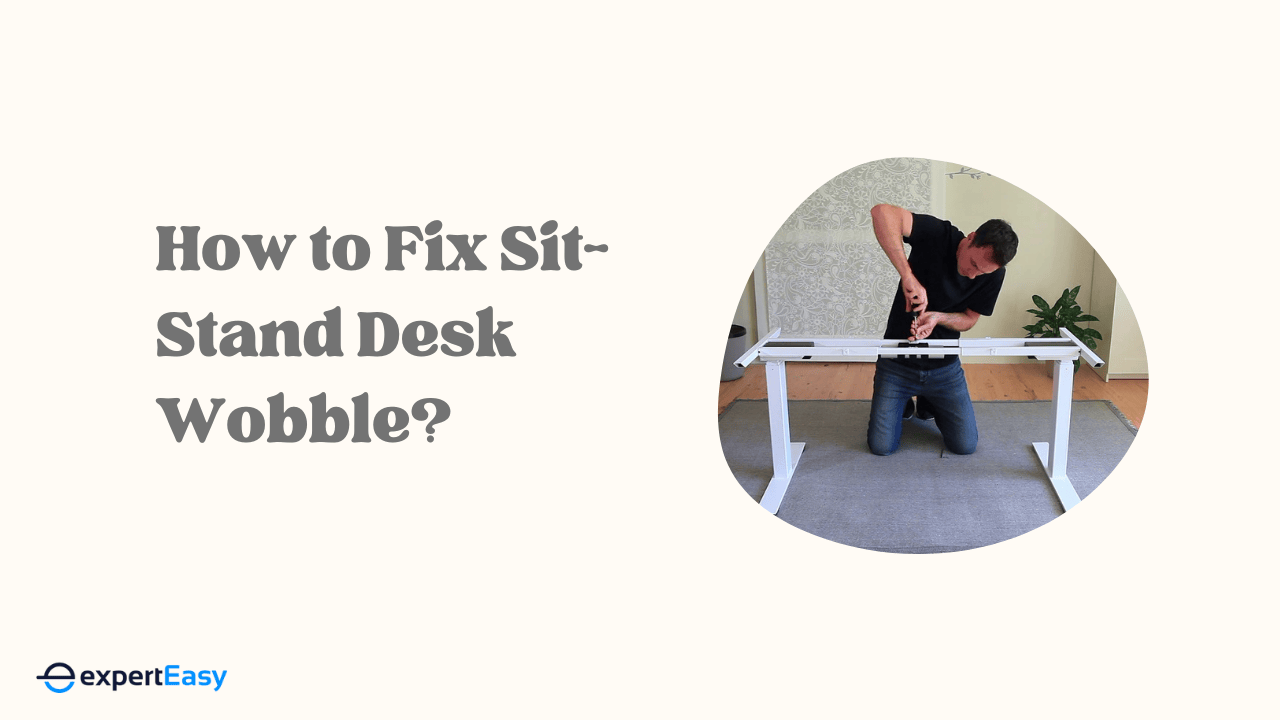While there are many benefits of remote work, there are also some challenges and risks that need to be addressed. One of which is ergonomics. Working from home leaves you without access to the ergonomic features and support available in the office. This can lead to poor postures, musculoskeletal injuries, eye strain, fatigue, stress, and reduced productivity.
In this comprehensive guide, I will provide practical tips and advice on creating an ergonomic workspace at home that suits your work tasks, environment, and individual needs. I will also share additional resources and tools to help you further improve your Work-From-Home (WFH) ergonomics. Ready? Let’s deep-dive.
Challenges of Remote Work
Besides ergonomics, there are other equally important challenges to working remotely. Let's take a moment to understand these challenges.
Mental Health Challenges
Working from home can mean working in isolation, which can affect your mood, motivation, and well-being. You may also face increased stress, anxiety, or depression due to uncertainty, workload, or lack of support from your managers and colleagues.
The Distraction Dilemma
Home is a hotbed for distractions, including household chores, family members, pets, or noise. These can interrupt your focus, productivity, and quality of work.
Communication and Collaboration Difficulties
Working from home can make it harder for you to communicate and collaborate with your managers and colleagues. You may experience delays, misunderstandings, or technical issues when using electronic tools. You may also miss the informal and spontaneous interactions that foster trust, creativity, and problem-solving.
The Work-Life Imbalance
Working from home can blur the boundaries between work and personal life. You may find it hard to switch off from work or to maintain a regular schedule. You may also feel pressured to work longer hours or be always available. This can lead to burnout, fatigue, or reduced satisfaction.
Work From Home Ergonomics: The Do’s

Now that we understand the challenges of working from home let’s go over some intuitive ways to be productive while staying healthy. Remember, just because it's home doesn't mean it can't be professional. Here's what you should do to have an ergonomic, productive workspace.
Treat Your Workspace Like an Office
The first step to improving your WFH ergonomics is to invest in the right equipment, such as an adjustable desk, chair, a separate keyboard and mouse tray, a monitor stand, and a footrest. These items help you adjust your workstation to suit your body size, shape, and preferences and avoid strain on your muscles, joints, and eyes.
Here is a curated list of the best height-adjustable desks. Likewise, I have reviewed the best ergonomic office chairs available in the market and all the essential WFH accessories to help you with your purchase.
Maintain Proper Posture and Adjust Your Setup Accordingly
A neutral spine posture keeps your spine in its natural curved shape without bending or twisting it too much. To achieve this posture, sit or stand with your head aligned with your shoulders and hips, your shoulders relaxed and not shrugged or hunched, your elbows level with the height of the work surface and close to your body, your wrists straight and not bent or twisted, and your feet flat on the floor or a footrest.
For further insights, read my guides on how to keep your posture strong while working from home and how to sit at a computer, where I share expert advice and practical tips to create an ergonomic workspace, reduce discomfort, and enhance productivity.
Take Frequent Breaks
Sitting or standing for long periods can cause blood circulation problems, muscle tension, joint pain, and other health issues. To prevent these problems, take short breaks every 25 minutes to stand up, walk around, stretch, or do light exercises.
You can use the Pomodoro technique or set a timer to remind yourself to take breaks. Similarly, change your position throughout the day by alternating between sitting and standing regularly.
I recommend using a standing desk at home to help you switch between standing and sitting easily. But if you can't afford the high-end options, here are some creative ways to integrate a standing desk at home.
Stretch Your Muscles and Do Light Exercises
Stretching can help you loosen up your muscles, improve blood circulation, relieve tension, improve flexibility, and reduce the risk of injury. Stretch before and after work, as well as during breaks.
You can do light exercises to keep your heart rate up, burn calories, and boost your mood. I recommend online tutorials or home exercise apps for guidance. Similarly, you can join a virtual fitness class. Otherwise, activities like walking, jogging, cycling, skipping rope, or dancing can be beneficial.
Optimise Your Workplace for Calls
If you have to attend video calls or meetings, make sure your workplace is all-time-ready. This means having a good internet connection, a decent webcam and microphone, and a professional or neutral background. Use the features available to you on Zoom, such as virtual backgrounds, touch-up appearance, or mute audio and video, to enhance your online presence and avoid distractions.
Optimise Your Lighting, Ventilation, and Noise Levels
Lighting, ventilation, and noise can affect your vision, concentration, mood, and performance. To optimise your workspace for these factors, position your screen sideways to windows to avoid glare, and use blinds or curtains to adjust natural light and fans for fresh air. I also recommend headphones or earplugs to block out distractions. But avoid working in dark or dim areas that can cause eye strain and fatigue.
Order Your Lunches From Restaurants
If you don’t have time or energy to cook or prepare your meals, you can get them delivered to your home to save you the hassle of going out to buy food or cooking in the kitchen. This also allows you to try different cuisines and support local businesses.
Cooking at home can be tedious, time-consuming, and messy. By getting your food delivered, you can free up more time and energy for your work tasks, personal errands, or leisure activities. You also avoid food wastage or dealing with leftovers this way.
Work From Home Ergonomics: The Don’ts

Some of the common mistakes and pitfalls to avoid when setting up and using an ergonomic workspace at home are:
Don’t Work From Your Bed or Couch
These surfaces do not provide adequate support or stability for your body and can make you adopt poor postures, leading to pain and injury. Use a flat, stable work surface large enough to fit all the items you require, such as a desk, table, or counter. I go in-depth on how to set up a complete workstation in my ultimate home office setup guide.
Don’t Hunch or Use Trackpads for Long
If using a laptop, raise it so that the top of the monitor is at eye level and use a separate keyboard and mouse. This prevents you from bending your neck or dipping your chin while looking at the screen, reducing the pressure on your wrists and fingers when operating the computer.
The best practice is to keep both arms close to your body and avoid reaching or twisting when using the keyboard and mouse. You can purchase a laptop stand or riser to deal with these issues.
Don’t Position Your Monitor Incorrectly
The top of your screen should be at eye level or just below and approximately one arm’s length away. This helps you maintain a comfortable head and eye position and avoid strain and fatigue. If you have a fixed-height desk, you may need a monitor stand or arm to adjust the distance or angle of your screen to suit your vision needs.
Don’t Ignore Pain or Discomfort
If you experience pain or discomfort in your muscles, joints, eyes, or other body parts while working from home, do not ignore it or try to work through it. Report any work-related injuries or illnesses to your employer as soon as possible and follow their procedures for workers’ compensation claims. I recommend seeking medical advice from your doctor or health professional if necessary or when the symptoms persist.
Don’t Neglect Your Mental Health and Well-Being
Working from home can pose some challenges to your mental health and well-being. Set clear work expectations and boundaries with your manager and family members to cope with these challenges.
Likewise, communicate regularly with your colleagues and support networks, engage in hobbies and leisure activities that make you happy, and seek professional help if you feel overwhelmed or depressed.
Frequently Asked Questions (FAQs)
Here are some frequently asked questions on work-from-home ergonomics.
Why is flexibility important in working from home?
Flexibility is important in working from home because it can help you balance your personal and professional life, adapt to changing circumstances, and improve your productivity and well-being. Flexibility can mean choosing your work hours, location, and tasks, as well as adjusting your work style and pace according to your preferences and needs.
Flexibility can also mean being open to learning new skills, using new technologies, and collaborating with different people. By being flexible, you can take advantage of the benefits of working from home, such as saving time and money, reducing stress, and enhancing your performance.
What are the ergonomic tips for working from home?
Some ergonomic tips for working from home include using a dedicated workspace with a desk or table that supports your computer and other items you need and an adjustable chair that supports your lower back and helps you to maintain a neutral spine posture.
You can also use a separate keyboard and mouse and position them at the same level, close to your body and slightly away from the edge of the desk. Use a monitor or laptop stand and place it at an arm’s length away from you and at eye level or slightly below.
Also, optimise your lighting, ventilation, and noise levels to create a comfortable and productive environment and take frequent breaks and change your position regularly to avoid stiffness and fatigue.
What are the ergonomic hazards of working from home?
Ergonomic hazards are factors that can cause discomfort, pain, or injury to the musculoskeletal system, which includes the muscles, joints, bones, tendons, and ligaments.
Some examples include poor posture, such as slouching or leaning back, especially if prolonged or repeated; frequent heavy lifting, pushing, or pulling; overhead work or awkward movements, improperly adjusted workstations and chairs; using too much force or vibration, heat, or cold, poor lighting, noise, or poor ventilation.
These lead to musculoskeletal injuries, such as low back pain, neck pain, shoulder pain, carpal tunnel syndrome, eye strain, headaches, or fatigue.
Why is ergonomics important while working from home?
Ergonomics is important while working from home because it can help you prevent or reduce the risk of musculoskeletal injuries, such as back pain, neck pain, shoulder pain, or carpal tunnel syndrome that can result from poor posture, repetitive movements, or improper equipment.
Ergonomics also improves your comfort, productivity, and well-being by optimising your work environments, such as your lighting, ventilation, noise, and temperature.
How does working from home affect posture?
Working from home can affect posture in various ways, depending on where and how you work. If you work on a laptop, couch, bed, or other surface that is not ergonomically designed, you may tend to slouch, lean forward, hunch over, or twist your body.
These postures can cause strain on your neck, back, shoulders, wrists, and eyes. They can also lead to musculoskeletal injuries, such as low back pain, neck pain, shoulder pain, carpal tunnel syndrome, eye strain, headaches, or fatigue.
Key Takeaways
In this article, I’ve provided some practical tips and advice on setting up and using an ergonomic workspace at home based on the model WHS laws and guidance from Safe Work Australia and Comcare. Following them can protect you from injury and illness, enhance your comfort and performance, and enjoy the benefits of remote work.
If you need more help or information on how to improve your work-from-home ergonomics, you can check out some of these valuable resources and tools:
- Safe Work Australia’s Working from Home - Workstation Setup Guide - COVID-19 provides a step-by-step guide on how to set up your workstation at home, with illustrations and examples.
- Comcare’s Coronavirus (COVID-19) – Working remotely provides information and advice on how to manage your health and safety while working remotely, including mental health, communication, and consultation.
- Office Safety Tool’s working from home provides an interactive tool that helps you assess your home-based workstation and identify any areas for improvement.
I hope you found this guide helpful and informative. Remember, ergonomics is not a one-size-fits-all solution. Thus, adjust your workstation to suit your work tasks, environment, and individual needs. And don’t hesitate to contact your employer or health professional with any questions or concerns. Until next time, keep those work-from-home postures comfortable, and stay safe.







